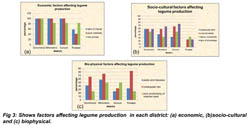From 22-26 October, for the first time and all the way (from microbes to markets), the world of Integrated Soil Fertility Management (ISFM) was captured in six themes: Starting with (1) advancing plant-microbe interactions we then moved to the field scale in (2) enhancing BNF in smallholders and to a broader level of (3) exploring options for intensification and diversification of farming systems and (4) identifying bottlenecks for implementation of ISFM. In combination with (5) commercializing breakthrough technologies and (6) building capacity in ISFM these themes allowed for a true exploration of ISFM. The conference incorporated the 14th meeting of the African Association of Biological Nitrogen Fixation.
The N2Africa contributions to the conference in the form of posters or oral presentations really covered this wide range of ISFM issues. Only looking at Zimbabwe, five posters took us on a journey, starting in the fields, where rhizobia strains were tested (Tatenda Kainga et al.), and where responses of common grain legumes to the application of different fertilizer amendments were studied (Talkmore Mombeyarara et al.). From the field level, we moved to the farmers themselves, by looking into socio-economic factors affecting legume production (Sobonginkosi Dunjana et al. – see poster) and factors that determine soyabean market participation (Byron Zamasiya et al.). Isaac Chabata et al. presented an analysis of the dissemination of new techniques by assessing the commonly used Lead Farmer approach.
Contributions from other countries also dealt with a wide range of topics. Starting in the lab, bio-prospecting for elite strains of rhizobia in Kenya was presented by Maureen Waswa. In Malawi, environmental drivers of diversity in soyabean-nodulating-rhizobia in un-inoculated soils were determined (Mary Parr et al.) and Endalkachew Wolde-Meskel showed the enormous diversity of native rhizobia in Ethiopia. M. Walangululu et al. found a varied response to inoculation in soyabean on degraded and fertile soils in Congo. Moving away from rhizobia, promising results were presented from Mozambique, where different row and plant spacing of groundnut (variety Nametil) increased yields tremendously (Henriques Colial et al.). However, Frederick Baijukya et al. showed that varieties with the highest potential for BNF do not always fit into the cropping system or do not have the desired traits. Therefore, the process of selection should be interactive. Yet, a very positive point was made by Paul Woomer et al., who illustrated how well soyabean enterprise has taken root among Kenyan smallholders, who cooperated and bulked their produce after a successful harvest, and were able to compete with the imported soyabeans. Sticking to markets in the end, Admire Katunga looked into competiveness of shelled groundnut in Malawi.
|
Fragment of a poster persented by one of the N2Africa MScs |
Some more impressions of the conference from the N2Africa participants: "The ISFM conference was interesting and full of so many new intriguing ideas and well informative presentations" – Tatenda Kainga, University of Zimbabwe "Research on ‘on-farm’ should not be for the researchers’ curiosity and nothing more. Farmers should be informed about the technology so that they walk the technologies and innovations for them to benefit in terms of increase in yield of the produce. I propose that few representative farmers should be invited in such conferences because they can learn a lot from different researchers." – Maureen Waswa, University of Nairobi "The organizers gave more opportunities for students (good idea)" – Henriques Colial, Agricultural Research Institute Mozambique (IIAM) |
One point that became very clear throughout the conference which was stressed in Ken Giller’s keynote using many examples from N2Africa is that there are no one-size-fits-all or silver bullet solutions for ISFM and that we have to move from best-bet solutions that are adapted to some situations to best-fit solutions specifically adapted to the local situation. The presentation from Esther Ronner et al. showed that major lessons drawn from N2Africa focus on local adaptation and tailoring of techniques. But also outside N2Africa this paradigm shift has already set off, as became clear from many presentations, such as the work from Jens Aune (Norwegian University of Life Sciences), who showed that local adaptation of seed priming and micro-dosing of fertilizer techniques for millet and sorghum farmers in Mali resulted in high adoption.
Perhaps we should consider ISFM as basket full of locally adapted Important Strategies for Farmers to produce More (in the words of Bernard Vanlauwe). Together with other techniques presented at the conference, legumes add to the basket of options from which farmers can choose to produce more and maintain their soil fertility. But a full basket only is not enough: the contents of the basket should be accessible to farmers as well. Teresah Wafullah addressed this aspect, by telling the story of MEA limited (Kenya), where inoculants and legume specific fertilizer blends are produced and marketed in small packages. Although the inoculants do not yet meet the quality standards (Stanley Kisamuli et al.), such private sector initiatives should be supported to make available ISFM technologies work for African farmers.
Greta van den Brand and Esther Ronner

